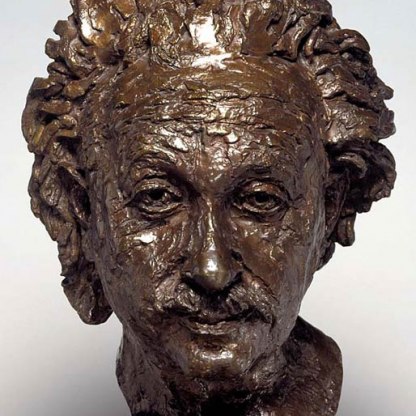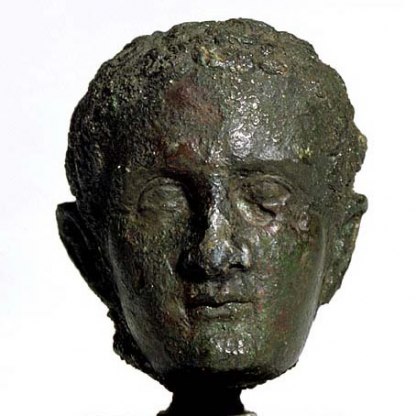Camels

A friend once described Larry Rivers as the only man addicted to nicotine who didn’t smoke. Rivers responded to cigarette packets as Andy Warhol did to tins of soup. He painted them. Over and over again. When he discovered that Rembrandt’s painting, Syndics of the Drapery Guild, had been adapted to decorate packets of Dutch Masters cigars, he revelled in the conjunction of high art and mass production, and painted the boxes many times. A work of art which had become a marketing tool was recycled once more as a work of art.
Before discovering a natural talent for draughtsmanship, Rivers had made his living as a jazz saxophonist, and one way of looking at Camels is as a free improvisation around the theme of the camel. The animal appears sixteen times on the canvas, treated differently in each appearance.
It is drawn carefully in outline as though a study from nature.
It is sketched hurriedly in brown paint.
It appears as a blurred mass.
And as well as the image of the animal, Rivers plays around with its name, highlighting or omitting certain letters. On the bottom row, only the letter C is left, hanging above the dromedary like a crescent moon.
The only other word legible in the painting is 'TURKISH' – the original Camel cigarette packets carry the legend 'TURKISH & DOMESTIC BLEND'. But despite the Middle Eastern beast of burden, the desert in which it stands, and the palm trees and pyramid that appear on the original packets, Camel is a quintessentially American cigarette. It was the favoured brand of Frank Sinatra and John Wayne. A cult novel in the US by Tom Robbins, Still Life with Woodpecker (1980), is described by its publishers as 'a sort of love story that takes place inside a packet of Camel Cigarettes'.
Rivers was described in his lifetime as ‘the Karl Marx of Pop Art', and in his use of an instantly recognisable commercial motif, repeated and transformed by materials associated with high art, it is easy to see why he was seen as an important figure within the movement. Jasper Johns painted the American flag. Roy Lichtenstein drew inspiration from cheap comic books. Claes Oldenburg ‘sculpted’ giant hamburgers, a possibility that Rivers himself had seen on his first trip to Los Angeles in the late 1960s. He recalls in his autobiography that:
fast food drive-ins invariably had some three-dimensional image referring to what was being sold. A hamburger joint supported a giant hamburger and bun 20 foot in the air, with a figure that tall holding another burger in his palm. Not too attractive as serious sculpture but arresting and amusing, it made you think that the idea of creating some object in a size bigger than usual had some validity ...
Before Rivers died he must have been aware of the recent marketing of Camel cigarettes and the controversy surrounding the revamped mascot, Joe Camel. No longer the reliable ship of the desert, Joe became an all-American biped, a dude who – like Rivers – played the saxophone and shot pool, drove a convertible and wore Ray-Bans. Beautiful women dripped from his arm. In 1997, however, he was stripped of his clothes and attitude, and forced to walk once again on all fours after health groups in America objected to this blatant attempt to appeal to the young.
One Camel cigarette campaign involved a fake dollar bill with Joe standing in for George Washington, a cigarette dangling from his fat lips: exactly the kind of deliberately tasteless juxtaposition that a Pop Artist might have imagined in the 1960s. In fact, George Washington and the dollar bill were two American icons that Rivers himself had used in his work. The commerce between art and marketing continues.
Themes and periods
Data from our collections database
With Gimpel Fils; bought by Sir Robert Adeane, May 1962; from whom purchased, through the Mayor Gallery
Legal notes
From the Cunliffe Fund with 50% Grant-in-Aid from the Victoria & Albert Museum.
Acquisition and important dates
- Method of acquisition: Bought
- Dates: 1979
Dating
- 1960s
- Production date: circa AD 1962 : one of several versions of Camels painted in the early 1960's
Maker(s)
- Rivers, Larry Painter
Materials used in production
Read more about this recordOther highlight objects you might like
Suggested Curating Cambridge products
Sign up to our emails
Be the first to hear about our news, exhibitions, events and more…





